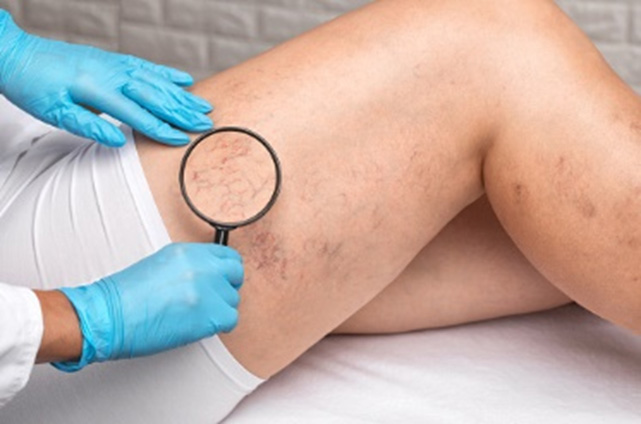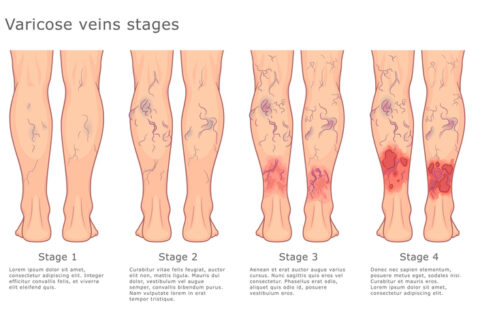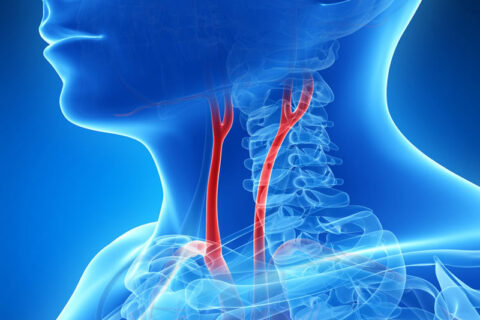Are Spider Veins and Varicose Veins the Same Thing?
Understanding Vein Health
You might not think very much about your vascular system, but it works hard to keep blood circulating through your body. When the heart pumps, arteries carry the fresh, oxygen-rich blood away from the heart and to cells and organs. Once the nutrients and oxygen in the blood have been delivered, the veins carry the blood, now holding waste products, on the return trip, passing through the kidneys and liver to drop waste before heading back to the lungs for more oxygen, then to the heart to start the journey again. The veins in your legs may have the hardest job of all, because they have to fight gravity to send the blood where it needs to go. To facilitate this, veins are equipped with little valves, which keep the blood flowing in the right direction. Unfortunately, these valves sometimes stop working properly. When this happens, the blood begins to flow the wrong way, and can pool in the veins, leading to spider veins and varicose veins.
What are Spider Veins?

Spider veins are the result of damage to small blood vessels near the surface of the skin, often on the legs, but they can be anywhere, even on the face. They’re called spider veins because they often look like a web, but they can also just look like thin lines. They can be blue, red, or purple, but they are not dangerous on their own. They rarely cause discomfort, though they can sometimes be itchy. Typically, people get treatment for spider veins just because they don’t like the look of them.
What are Varicose Veins?

Varicose veins are very unsightly. They are large and twisting, bulging above the skin, and typically found on the legs. Varicose veins are usually blue or purple, and they can cause the legs to swell. They are the result of blood pooling in the veins, causing pressure that makes the veins get bigger and twist.
Key Differences Between Spider Veins and Varicose Veins
While varicose veins and spider veins are both caused by damage to veins, there are some differences between them. Obviously, they differ in appearance, with spider veins looking like small spiderwebs, while varicose veins are lumpy or ropey, raised from the skin. Varicose veins are much larger than spider veins, and while varicose veins can cause itching, pain, and swelling, spider veins usually don’t have symptoms. Most importantly, though, untreated spider veins do not generally cause any issues. However, while varicose veins don’t usually have complications, the complications that can occur can be dangerous. Varicose veins can lead to venous leg ulcers, they can burst and bleed, and they increase a person’s risk of developing blood clots, including deep vein thrombosis and pulmonary embolism. When varicose veins are severe, that can mean that they are a symptom of chronic venous insufficiency.
Symptoms: How to Tell If You Have Spider or Varicose Veins
If you have spider veins or varicose veins, you will probably notice them, just because of the way they look. That is often the only symptom of spider veins. Sometimes, varicose veins don’t have any symptoms, either, but they can cause a feeling of heaviness in the legs, leg cramps, burning or itching, or swelling of the legs and ankles.
Are Spider Veins and Varicose Veins Dangerous?
Spider veins are usually harmless. Varicose veins can be harmless, but they can lead to conditions that can be very dangerous. The longer you leave them untreated, the higher your risk of developing a more serious condition.
- Deep vein thrombosis: This happens when one of the deep veins in the body develops a blood clot, and it can cause leg pain and swelling.
- Pulmonary embolism: This life-threatening condition occurs when a blood clot travels to your lungs. Symptoms include shortness of breath and chest pain, and immediate medical attention is required.
- Superficial thrombophlebitis: When a blood clot develops in your vein, just under your skin, causing severe, sharp pain.
- Venous leg ulcers: These are slow-healing sores on the legs that can happen because of blood backing up in the veins and causing pressure on the skin, resulting in an open sore.
When to See a Vein Specialist
You may be asking yourself, “How do I prevent spider veins and varicose veins, and when do I need to see someone about them?” If you have questions or concerns, or the vein issues you have are causing you discomfort, it is wise to seek a consultation from a specialist. A vein specialist can explain how you can prevent varicose veins and spider veins, as well as advise you on treatments available to help you. While you are waiting for your appointment, try not to sit or stand for long periods of time, and elevate your legs as much as you can.
Visit the Vein Specialists at California Vein and Vascular Centers
Don’t let vascular issues like varicose veins and swollen legs bring you down. At California Vein & Vascular Centers, we provide high-quality results for vascular disorders, using innovative technology and customized treatments. Our board-certified surgeons have a reputation for being leaders in our field, and with good reason. California Vein & Vascular Centers is the number one clinic in California for vein procedures, top five nationally for the number of vein procedures we have performed, and top ten nationally for our treatment of peripheral artery disease. With locations in Los Altos, Los Gatos, Morgan Hill, and Salinas, we are proud to serve the Bay Area, providing care that stems from many years of experience. We have a 99 percent success rate, and we are committed to effectively identifying and treating vein and vascular conditions. To learn more about the precision treatments we provide, contact us through our website for more information or to make an appointment.


